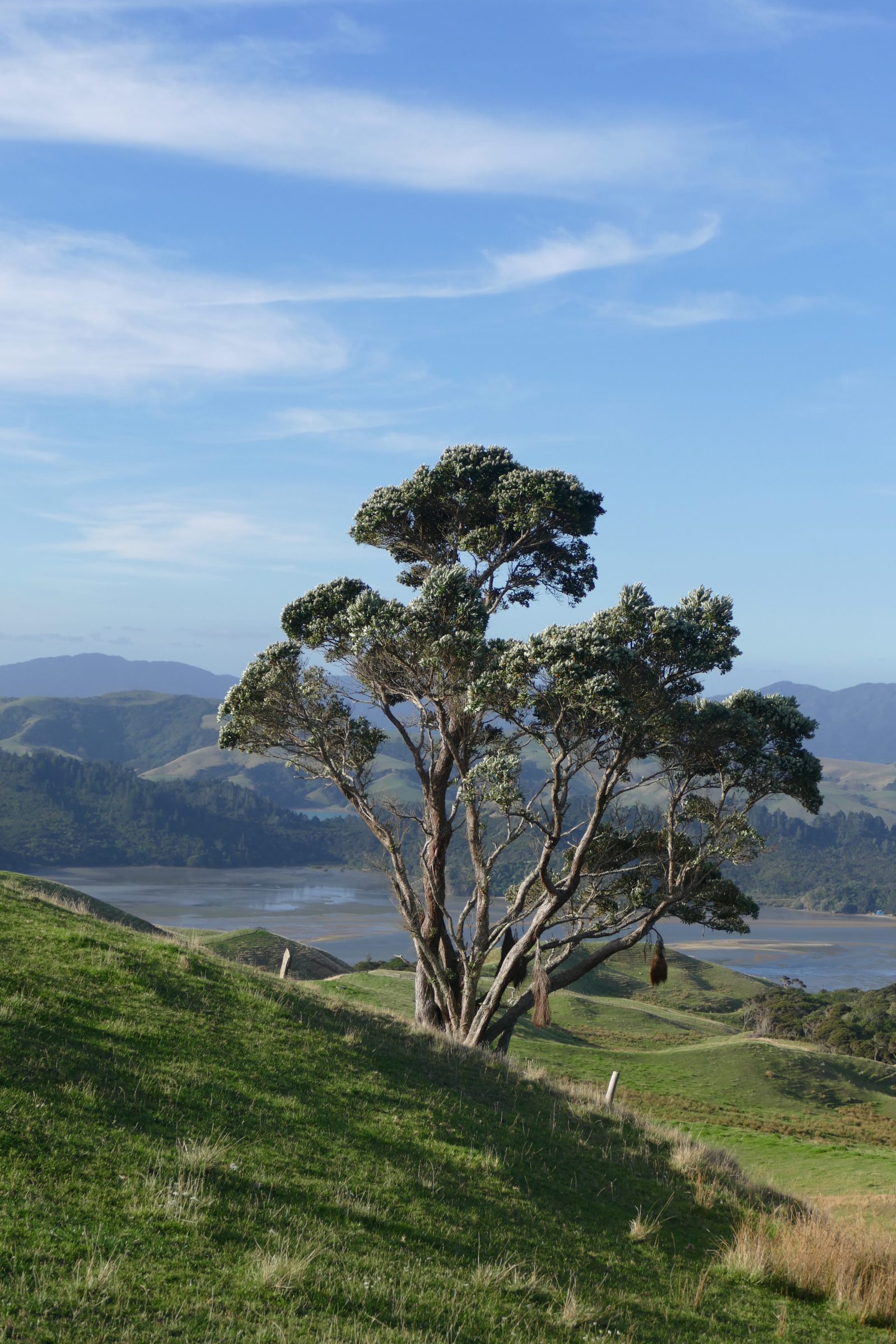So much of Australia is parched, low-lying, flat(-tish)
So much of New Zealand is well-watered, extravagantly green, and its horizons usually include substantial hills or mountains.
Understandably, many visitors to NZ – Australians, especially – are utterly beguiled, and swallow, whole, the assiduously marketed fiction that New Zealand is “green” and “pure”.
In fact, New Zealand is a world leader in deforestation, species extinctions, soil erosion and the severe degradation of (almost all) its substantial river catchments.
Dominated by a splendid Pohutukawa tree, the featured image shows a quintessential, picturesque New Zealand North Island landscape.
I took the photo at 6.37 pm on 5 March 2017, on the western side of the Coromandel Peninsula.
Had I been there pre-1795, my eyes would have gazed across seemingly-endless rainforest-clad slopes, and a very much deeper bay.
The sand/mudflats – likely, millions of tonnes worth – which now occupy much of the bay are the result of the rainforests’ removal, followed by ill-considered farming methods.
If you zoom in on the bay’s far side you can see that mangroves are currently “colonising” it.
The influx of sediments into estuaries is mostly due to land use changes: from changing native forest to forestry land, forests to farmland and undeveloped land transformed into urban areas. NZ represents .05% of the global land surface area, yet our highly erosive volcanic soils contribute around 2% of the global sediment input! (20 billion tons) per year. Per square basis we deliver 40 times more sediment than the global average.
Click here to read the relevant summary of the NZ webinar From the Rivers to the Sea. (the participant quoted above is Dr Conrad Pilditch of the University of Waikato.
There is no published literature that clearly links ecological enhancement with mangrove removal in New Zealand. There is, however, evidence that identifies significant adverse ecological effects associated with mangrove removal.
The above quote is from marine ecologist’s Dr Sharon De Luca’s Mangroves in NZ – Misunderstandings and Management; click this to read the entire essay.
Dr De Luca wishes that more New Zealanders recognised that NZ’s single species of mangrove is definitely not an “alien” – Avicennia marina var. australasica has grown in some northern New Zealand intertidal zones for at least 19 million years!
Click here to hear an RNZ interview with Dr De Luca.
The next several posts in this series will incline more to beauty than to science.
